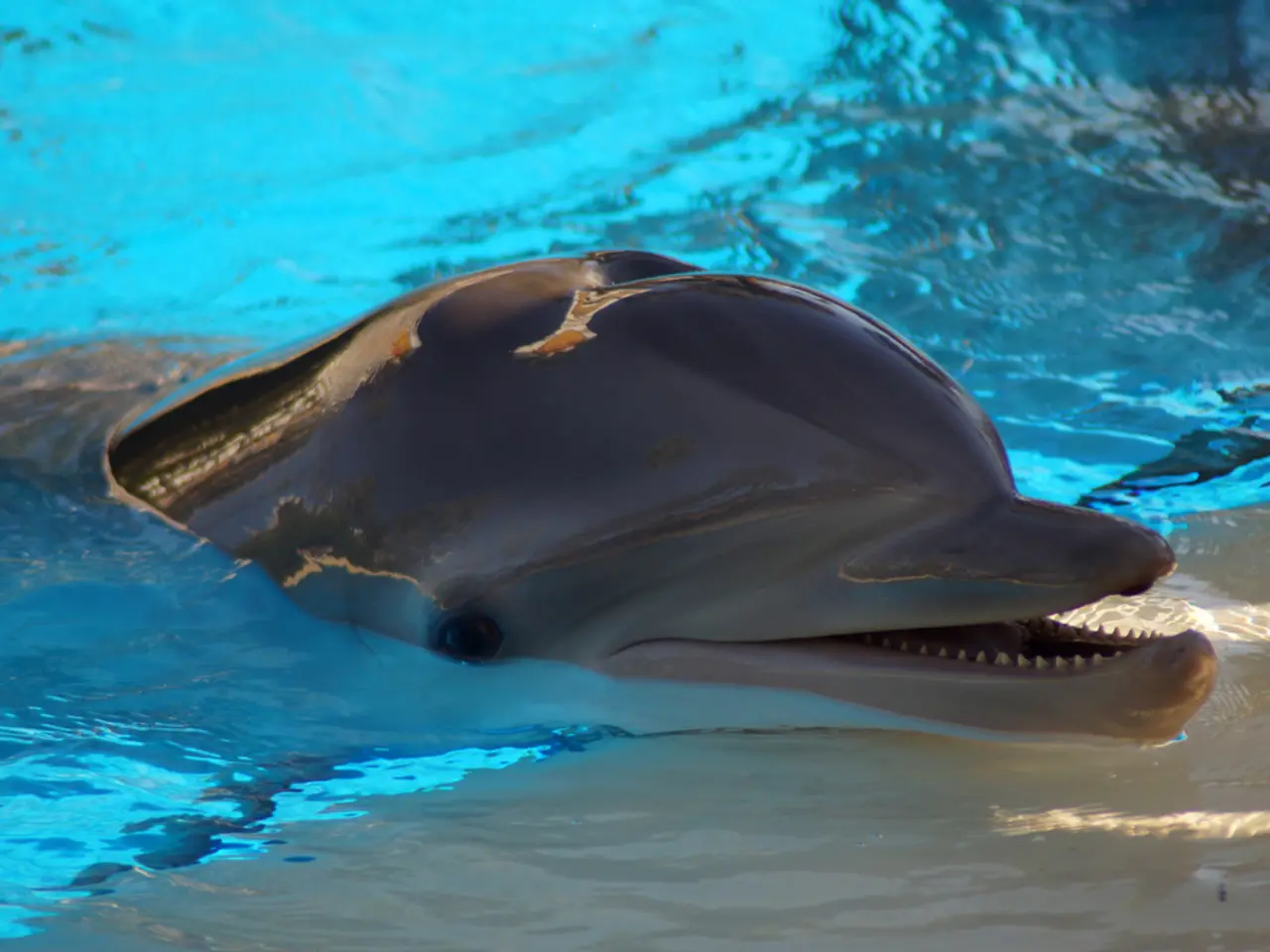Harmful algae growth jeopardizes sanctuary for dolphins in Australia
In the heart of South Australia, a toxic algal bloom has been described by locals as one of the worst ever, posing a significant threat to the marine life in the region, including the unique Adelaide Dolphin Sanctuary. Established in 2005 and supported financially by the Whale and Dolphin Conservation (WDC) for over 30 years, the sanctuary is a vital haven for Indo-Pacific bottlenose dolphins.
The algal bloom, caused by the marine algae Karenia mikimotoi, has been exacerbated by climate change-related factors such as a persistent marine heatwave, nutrient influxes from recent floods, and stable sea conditions. These conditions have fueled a large-scale harmful algal bloom along over 150 km of coastline, causing the death of over 13,000 marine animals from more than 450 species.
While direct impacts on the dolphins within the sanctuary are not yet confirmed, the broader ecosystem effects are severe due to food web disruptions caused by fish and prey species dying from the bloom. The toxin-driven die-off of prey species can reduce food availability and disrupt the marine ecosystem dynamics on which dolphins depend.
Declan Andrews of WDC Australia explains the current situation, "This toxic algal bloom is causing an ecological catastrophe, with entire food chains collapsing and potentially affecting highly mobile species such as dolphins." A recent dolphin death on Henley Beach linked to the ongoing algal bloom crisis is under necropsy investigation, but it was not confirmed to be from the Adelaide Dolphin Sanctuary or directly caused by the bloom toxins.
Research on the population of dolphins in the sanctuary is conducted to monitor the situation. The WDC, the world's leading non-profit organization dedicated exclusively to the protection of whales and dolphins, is at the forefront of these efforts. WDC experts work in national, European, and international working groups, having direct influence on key decisions regarding the future of whales and dolphins.
The WDC's vision is a world where all whales and dolphins live free and safe. The organisation plays a crucial role in the marine ecosystem and is an ally in the fight against climate change, as whales contribute to carbon sequestration. The WDC's work benefits the climate by defending whales and dolphins, which are crucial components of the marine ecosystem.
The report "Whales in Hot Water", released by WDC in December 2023, highlights the impacts of increasing toxic algal blooms on whales, dolphins, and the marine ecosystem in relation to climate change. The report received significant media attention.
The Adelaide Dolphin Sanctuary, home to the Indo-Pacific bottlenose dolphins affected by the current crisis, is located in the Port River of Adelaide, Australia. The bloom is caused by rising water temperatures and an excess of nutrients such as nitrogen and phosphorus.
WDC is politically independent, registered as a charity, and funded through donations and foundation grants. To learn more about WDC's work and how you can support their efforts, visit their website at www.whales.org.
- The toxic algal bloom, a consequence of climate change and environmental factors, is not only threatening marine life in South Australia's Adelaide Dolphin Sanctuary but also disrupting the food web dynamics crucial for dolphins, as highlighted in the WDC's latest report "Whales in Hot Water."
- The Whale and Dolphin Conservation (WDC), an international leader in the field of science and health-and-wellness, plays a vital role in the environmental science community, not only protecting dolphins but also contributing to the fight against climate change by defending crucial marine species that aid in carbon sequestration.




